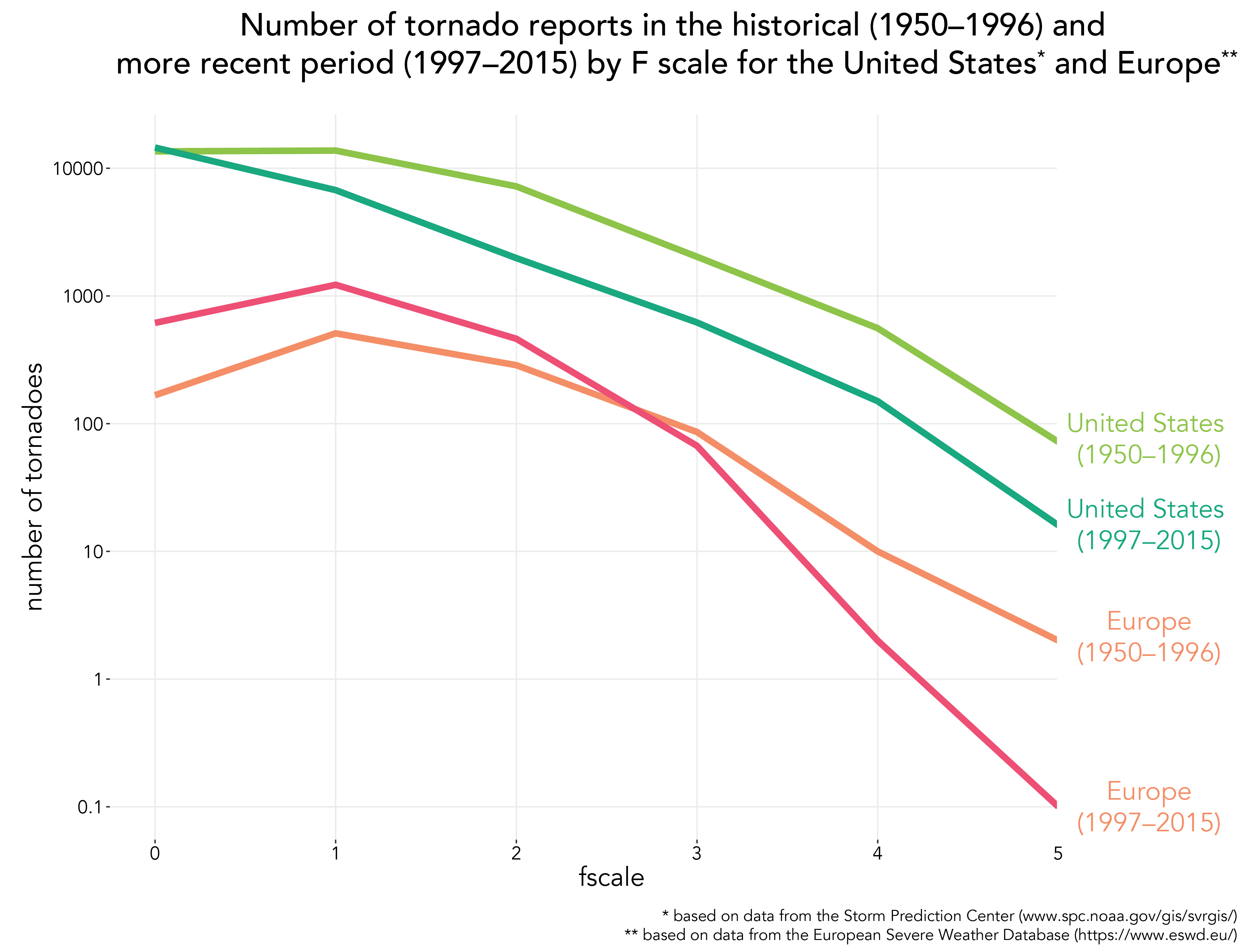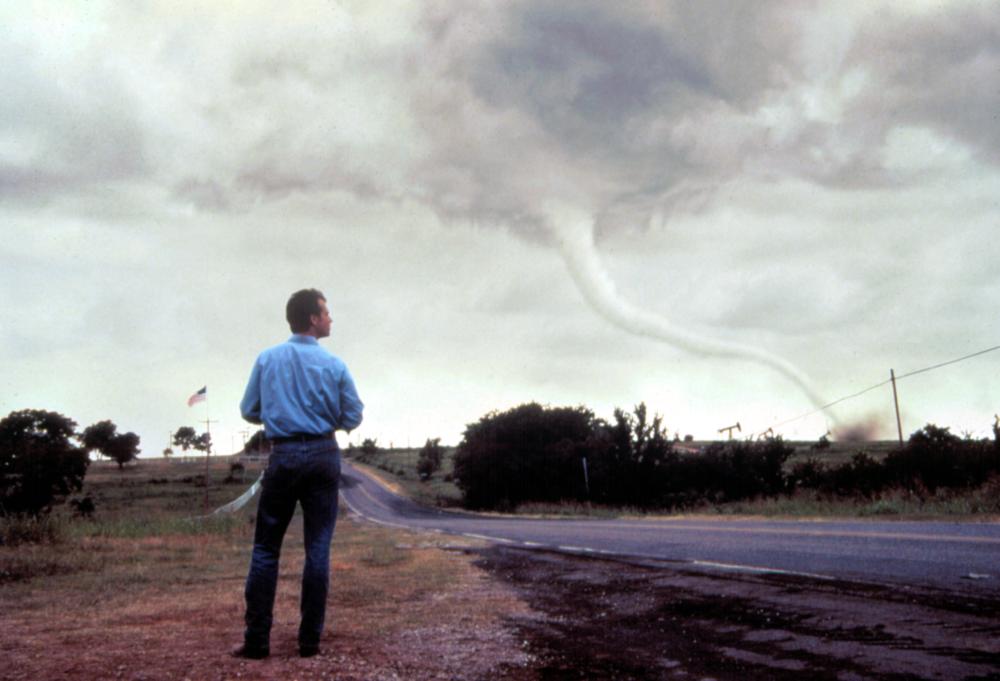How Bill Paxton Helped Us Understand Tornadoes in Europe
Today I learned that Bill Paxton died at the age of 61. I never met him, although I knew people who had met him during the filming of Twister. He was said to be friendly and curious about the science on set. Many meteorologists of a certain age group are likely in this career because of the movie, glorifying the quest for scientific understanding in the face of incredible personal risk.
In Twister, Paxton plays Bill Harding, ex-husband to Dr. Jo Harding (played by Helen Hunt). The pair of researchers goes in search of tornadoes on the U.S. Great Plains, with the hope of launching instruments that will be caught up in the tornado vortex and reveal the mysteries of the tornado that had never been measured before. The movie first showed in the summer of 1996, the same summer that I, a freshly-minted Ph.D., moved to Norman, Oklahoma, to the NOAA/National Severe Storms Laboratory to study the processes that create severe weather in the United States.
What is less appreciated about this 21-year-old movie is its effect of improving the data collection in regions of the world where tornadoes are less frequent than in the United States.
In some European countries, the prevailing opinion of the general public – and even meteorologists – is tornadoes don’t happen here. Tornadoes are something that happens in the Great Plains, but not here. Tornado damage was often reported as being caused by straight-line winds or simply by a thunderstorm. Or – as happened in some communist-bloc countries – tornado reports were unrecognized by the government.
Tornadoes were virtually ignored in the Czech Republic and the damage produced by tornadoes were attributed to damaging winds. The term tornado was forbidden in both official and mass-media reports because ‘‘a tornado was something that was related to the U.S. Great Plains, but had no official presence in Central Europe’’ (Setvák et al. 2003, p. 599). – Quoted from Antonescu et al. (2016)
Twister helped change the recognition that tornadoes don’t happen here. By showing the general public what tornadoes look like on the movie screen (and these computer-generated tornadoes were eerily close to real ones filmed by storm chasers), the general public began to recognize them in real life. Along with the television show Storm Chasers and other storm-chasing programs, the growth of smartphone-enabled cameras and video, and the rise of a pan-European organization that would catalog tornadoes in a way that many individual countries were not doing, the perfect storm (if you allow me to mix my meteorological metaphors here) was forming to allow an explosion of tornado reports in Europe.

Number of tornadoes per year in Europe (Antonescu et al. 2017). The increase after 1996 is what we refer to as the Twister effect.
This increase in the number of tornado reports was so strong that we termed it the Twister effect in our paper on tornadoes in Finland, which also shows a similar increase (Rauhala et al. 2012).
The result of this increase is that the reports that we are receiving of tornadoes in Europe are more closely aligning with what we think the actual distribution of tornadoes should look like. What do I mean by this? Previously, violent tornadoes that caused a lot of damage and deaths would preferentially be recorded in the tornado database. Weaker tornadoes were generally unobserved or unreported. We see this in the United States tornado record (Verbout et al. 2006). As more tornadoes become reported, more weaker tornadoes are being reported, with the number of violent tornadoes remaining mostly constant over time.
The graph below shows this effect in both the United States and Europe, and is derived from work by NOAA’s Harold Brooks. The horizontal axis is the intensity of the tornadoes, from the weakest (0) to the strongest (5). The vertical axis is the number of tornadoes. The green lines represent the distribution of tornadoes in the United States as a function of intensity, whereas the red lines represent the distribution of tornadoes in Europe. Ideally, these lines should be straight on this logarithmic scale, indicating that weaker tornadoes are more abundant. Where the line is less straight, the dataset is less than perfect, indicating an underreporting in the number of tornadoes. Before Twister in 1996, the lines for both the United States and Europe were less straight. After Twister, however, the lines become more straight, particularly for the United States, but also for Europe (which also developed a steeper slope).

Graph of the intensity of tornadoes in the United States and Europe, both before and after Twister (1996). Courtesy of Bogdan Antonescu.
With a more accurate reporting of tornadoes, a more accurate calculation can be performed to determine the spatial distribution of tornadoes. Such distributions can be useful for calculating the threat of tornadoes for insurance companies, as well as determining the baseline for how tornado intensity and locations might change when the climate changes.
So, as we mourn Bill Paxton and remember his great roles in movies and on television, let’s also recognize that the science of severe storms in Europe is much improved, in part, because of his appearance in Twister.
– David Schultz and Bogdan Antonescu



